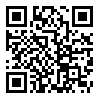Fri, Dec 5, 2025
Volume 11 - Continuous Publishing
Iran J Neurosurg 2025, 11 - Continuous Publishing: 0-0 |
Back to browse issues page
Download citation:
BibTeX | RIS | EndNote | Medlars | ProCite | Reference Manager | RefWorks
Send citation to:



BibTeX | RIS | EndNote | Medlars | ProCite | Reference Manager | RefWorks
Send citation to:
Singh M, Raghav A, Kumar S, Amresh Gautam K, Kumar P. Pediatric Head Injury: Analysis, Prognostic Markers, and Its Outcomes. Iran J Neurosurg 2025; 11 : 18
URL: http://irjns.org/article-1-471-en.html
URL: http://irjns.org/article-1-471-en.html
1- Department of Neurosurgery, GSVM Medical College, Kanpur, India. , manishsinghneurosurgery@gmail.com
2- Department of Anatomy and Cell Biology, College of Medicine, Gachon University, Incheon, South Korea. & University Center for Research & Development (UCRD), Chandigarh University, Mohali, India.
3- Department of Biosciences, GD Goenka University, Gurugram, India.
4- Department of Neurosurgery, GSVM Medical College, Kanpur, India.
2- Department of Anatomy and Cell Biology, College of Medicine, Gachon University, Incheon, South Korea. & University Center for Research & Development (UCRD), Chandigarh University, Mohali, India.
3- Department of Biosciences, GD Goenka University, Gurugram, India.
4- Department of Neurosurgery, GSVM Medical College, Kanpur, India.
Abstract: (788 Views)
Background and Aim: Pediatric head injury is a significant and preventable public health concern, contributing substantially to morbidity and mortality in children. Understanding its epidemiological and clinical profile is essential for optimizing management and outcomes. Accordingly, this study evaluates the incidence, demographic distribution, mechanisms of injury, clinical presentation, radiological findings, and outcomes of head injuries in pediatric patients aged 0–14 years, with a focus on prognostic markers such as level of consciousness and pupillary response.
Methods and Materials/Patients: A retrospective analysis was conducted on 165 children with traumatic brain injury (TBI) admitted to the Department of Neurosurgery, GSVM Medical College, Kanpur, India, over two years. Clinical parameters, including Glasgow coma scale (GCS), pupillary reactivity, and computed tomography (CT) findings, were recorded. Outcomes were classified using the Glasgow outcome scale (GOS).
Results: Of the 165 patients, 69.09% were male and 30.90% female. The most common cause of injury was falling from height (55.15%), followed by road traffic accidents (38.78%). GCS scores revealed mild TBI in 18.78%, moderate in 56.33%, and severe in 24.84% of cases. Pupillary abnormalities were present in 14.5% of patients, strongly correlating with poor outcomes. Overall mortality was highest (36.53%) in patients with GCS equal of 3–7. In contrast, patients with GCS 13–15 had a 90.32% good recovery rate. Pupillary reaction was a significant prognostic factor; accordingly, 75% of those with abnormal pupillary responses either died or were in a vegetative state. CT findings, such as combined intra- and extra-axial lesions and midline shift >5 mm, were also associated with higher mortality.
Conclusion: Low GCS at presentation and abnormal pupillary reactions are strong predictors of poor outcomes in pediatric TBI. Timely assessment and neuroimaging are crucial. Preventive strategies, especially targeting falls and road accidents, are vital to reducing the burden of head injury in children.
Methods and Materials/Patients: A retrospective analysis was conducted on 165 children with traumatic brain injury (TBI) admitted to the Department of Neurosurgery, GSVM Medical College, Kanpur, India, over two years. Clinical parameters, including Glasgow coma scale (GCS), pupillary reactivity, and computed tomography (CT) findings, were recorded. Outcomes were classified using the Glasgow outcome scale (GOS).
Results: Of the 165 patients, 69.09% were male and 30.90% female. The most common cause of injury was falling from height (55.15%), followed by road traffic accidents (38.78%). GCS scores revealed mild TBI in 18.78%, moderate in 56.33%, and severe in 24.84% of cases. Pupillary abnormalities were present in 14.5% of patients, strongly correlating with poor outcomes. Overall mortality was highest (36.53%) in patients with GCS equal of 3–7. In contrast, patients with GCS 13–15 had a 90.32% good recovery rate. Pupillary reaction was a significant prognostic factor; accordingly, 75% of those with abnormal pupillary responses either died or were in a vegetative state. CT findings, such as combined intra- and extra-axial lesions and midline shift >5 mm, were also associated with higher mortality.
Conclusion: Low GCS at presentation and abnormal pupillary reactions are strong predictors of poor outcomes in pediatric TBI. Timely assessment and neuroimaging are crucial. Preventive strategies, especially targeting falls and road accidents, are vital to reducing the burden of head injury in children.
Article number: 18
Keywords: Pediatric, Traumatic brain injury (TBI), Glasgow coma scale (GCS), Pupillary reaction, Injury outcome, Computed tomography (CT)
Type of Study: Research |
Subject:
Pediatric Neurosurgery
Send email to the article author
| Rights and Permissions | |
 |
This work is licensed under a Creative Commons Attribution-NonCommercial 4.0 International License. |






